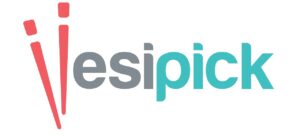In a dynamic software development team, where flexibility and rapid iteration are key, an application designer plays a crucial role in translating user needs into a functional and user-friendly interface. Here’s how an application designer can thrive in this environment:
Embrace Collaboration and Communication:
Early and Frequent Interaction:
Don’t wait for complete specifications before starting your design process. Collaborate with developers, product managers, and other stakeholders early and often to understand project goals, user needs, and technical feasibility.
Communicate Design Decisions:
Communicate your design decisions, rationale, and potential trade-offs. Utilize tools like mockups, prototypes, and user flows to visually explain design concepts.
Be Open to Feedback:
Welcome feedback from all team members, including developers and testers. Actively listen to their perspectives and iterate on your designs based on their input.
Focus on Agility and Adaptability:
Agile Design Methods:
Learn and utilize agile design methodologies like user story mapping, rapid prototyping, and iterative design. This allows for quick design iterations and adapts to changing requirements.
Embrace Design Thinking:
Develop a strong user-centric design thinking process. Focus on understanding user needs and pain points, and translating them into solutions through rapid prototyping and testing.
Be Flexible and Open to Change:
Priorities and requirements can change throughout the development process. Be flexible and willing to adapt your designs as needed while staying focused on the core user experience.
Master the Tools and Technologies:
Stay Up-to-Date:
Maintain a strong understanding of the latest design tools and technologies (e.g., design software, prototyping tools, UI/UX frameworks). This allows you to create high-fidelity mockups and prototypes that accurately represent the final product.
Learn Development Basics:
Develop a basic understanding of front-end development principles (e.g., HTML, CSS). This fosters better collaboration with developers by facilitating communication about design feasibility and technical limitations.
Utilize Design Systems:
If your team uses a design system, familiarize yourself with its components and guidelines. This ensures design consistency and reduces development time.
Become a User Advocate:
User Research and Empathy:
Actively participate in user research activities like user interviews and usability testing. This helps you empathize with user needs and translate their feedback into actionable design improvements.
Accessibility Considerations:
Ensure your designs are accessible to users with disabilities. Follow WCAG (Web Content Accessibility Guidelines) to create inclusive and user-friendly interfaces.
Usability Testing Champion:
Become a champion for usability testing within the team. Advocate for testing designs with real users throughout the development process to identify and address usability issues early on.
Additional Tips:
Develop Strong Documentation Skills:
Document your design decisions, rationale, and user flows. This ensures everyone on the team is on the same page and facilitates future maintenance and updates.
Stay Informed About the Latest Design Trends:
While staying true to your company’s branding, keep an eye on the latest design trends and user interface patterns. This can inspire innovation and enhance the overall user experience.
By following these strategies, application designers can become valuable assets in a dynamic software development team. Their ability to collaborate, adapt, and translate user needs into effective designs will be crucial for the success of any software project.



